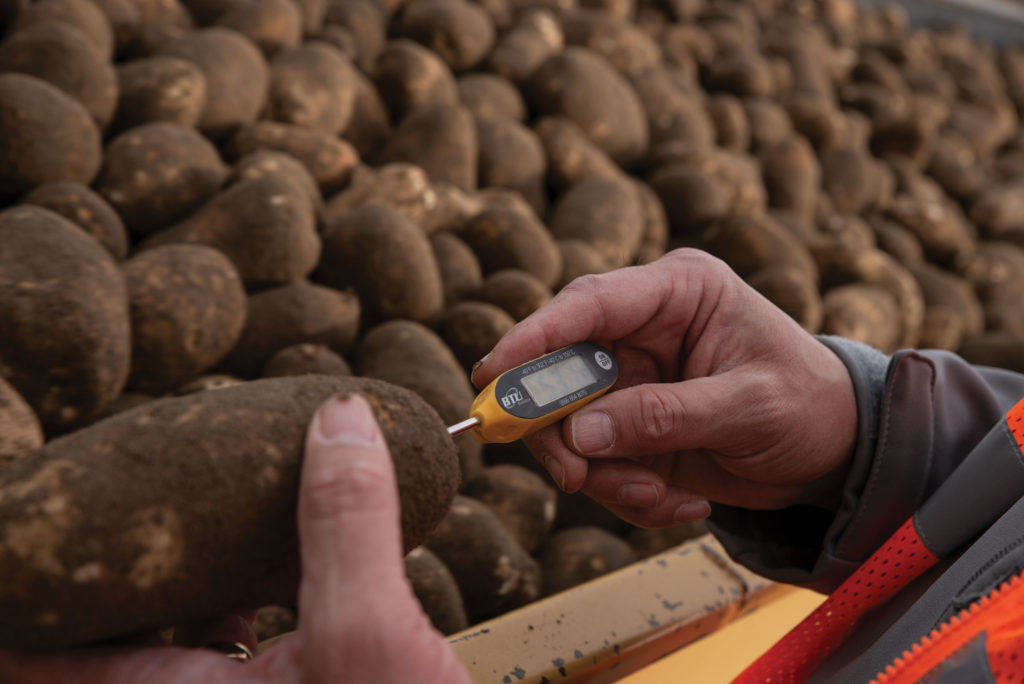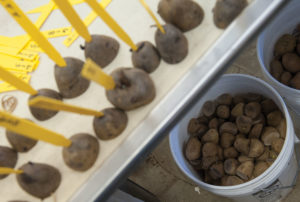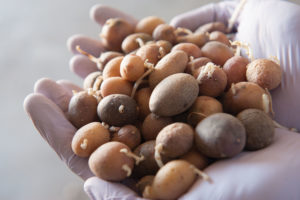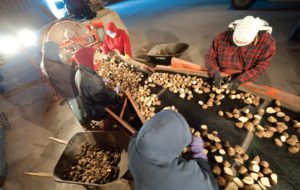
Pacific Northwest Climate-Smart Potato Program
Oregon State University (OSU) was recently awarded a $50 million grant from USDA in order to track the benefits of climate-smart practices within the Pacific Northwest potato industry.
With the collaboration of University of Idaho (U of I) and Washington State University (WSU), tribal nations, commodity groups and potato processing businesses, OSU embarks on a five-year project that is funded by USDA’s Partnerships for Climate-Smart Commodities program.
While the potato industry is specifically targeted, other crops, either through rotation or used as cover crops, will also be tracked for their benefits. The key is to look at soil health from a systems agricultural approach.

“We’re looking at the whole package of the system of what are the typical crops that are rotated with potatoes,” said Jeff Steiner, project lead and director of the OSU Hemp Innovation Center. “And then, how can that combination of rotation crops and additional climate-smart practices be incorporated to enhance the amount of organic matter that gets in the soil, improve the tilth, the nutrient availability, and reduce water stress.”
Hemp, being a relatively new crop in the country, is of particular interest to the project. There still isn’t a lot of information on hemp’s purported conservation value and equally purported way to sequester carbon in the soil. It’s for this reason that the team is looking at hemp as another potential rotation crop, along with crops — like alfalfa, wheat and corn — that could fit with potatoes.
Industrial hemp is a burgeoning market to explore, which is why the Hemp Innovation Center is leading the study, partnering with the Hemp Association of Washington.
There are a few other practices that the project is researching during the five-year study, and may include the augmentation of soils with manures for compost, using less disturbing cultural practices, strip cropping, etc.
“When you’re putting the cereals in, instead of tilling, if you’re able to, go in with no till or minimal till,” said Steiner.
 Even though the climate-smart potatoes project is working with a lot of the major potato companies, the majority of the money from the grant will be used to assist independent farmers, as well as interested Native American tribes, who are now looking to utilize their lands for agriculture. There are significant areas that are tribal lands over the three-state landscape, and the tribes have historically not used their lands for potato production.
Even though the climate-smart potatoes project is working with a lot of the major potato companies, the majority of the money from the grant will be used to assist independent farmers, as well as interested Native American tribes, who are now looking to utilize their lands for agriculture. There are significant areas that are tribal lands over the three-state landscape, and the tribes have historically not used their lands for potato production.
“But they are very significant landowners, and many of them are transitioning more towards farming themselves and farming their own lands,” said Steiner.
So far, and even with such a short amount of time to prepare the proposal, the Nez-Perce and Yakama tribes have officially signed up to participate in the project. Other tribes have shown interest, but have yet to formally be involved.
Of the $50 million grant, 70-75% is going to conservation support payments to farmers and the participating tribes, almost evenly split between tribe and non-tribe farmers. The rest will be allocated to the three different universities to conduct the research and document the effects of the climate-smart practices. Enrollment in the project is undetermined at the moment, as it’s a relatively new project, and it depends on the number of acres that the project could cover.
If these practices show an increase in captured carbon and soil health, they would ideally be adopted beyond the five years of the project, putting the framework for a climate-smart branding of crops akin to the USDA National Organic Program.

The information will be transparently recorded with a new method that uses non-fungible tokens (NFTs), that tracks the use of climate-smart practices, the valuation of benefits and ownership through product supply chains from field to market, and the value of soil health benefits. This would help in mitigating potential for credit double-counting and reduce the transaction costs through a linked supply.
Chain of custody ownerships will be investigated for the NFT exchanges between the project participants as part of the incentive transactions.
It’s most important to think about the project from a regional standpoint, and find a commonality between the various producers, no matter the size of their operation or if they are new to potato cultivation, such as with several of the tribes. It’s about finding practices that keep the soil healthy and being able to apply to the region as a whole, for a continuity of land management.
“I think if you know anything about farmers, land managers, tribes, resource managers,” Steiner said, “there’s a lot they have in common. We’re just trying to see how we can help everybody contribute in the region in that way.”
Photos: Oregon State University







